Posts Tagged ‘Hitler’


On 18 October 1942, the Führer himself issued the Kommandobefehl, or Commando Order. Based on previous successes of Commando-spearheaded surprise attacks such as the Raid at St. Nazaire, Hitler realized the enormous potential of British Special Forces in particular (though the ordered applied to all Allied belligerents) to cause massive disruption to German military superiority in Europe. Even with the Dieppe Raid proving a total disaster, its failure was not caused by a lack of competence of the soldiers on the ground, but more so by the inability to complete pre-invasion bombardment and other factors out of the control of those involved.
The order was justified by the Germans through rumors–the veracity of which remains unclear–that British commandos or “sabotage forces” had on more than one occasion tied up German prisoners of war, which itself went against the Geneva Conventions, and therefore legitimized the radical Commando Order. Regardless of the supposed rationality behind the order, it was treated as top secret and only to be seen by the highest command.
What the order called for went completely against the Conventions regarding the handling of prisoners of war. Hitler’s decree ordered than any commando encountered by German forces was to be turned over immediately to the Gestapo or SD, whether he surrendered or not, and regardless of if he was in uniform or plain clothes (typically, those in plain clothes were considered spies and were therefore not protected by the Conventions), or else-wise to be completely “annihilated” in battle Once turned over to the German intelligence and police units, these “prisoners” were generally sent to camps for execution. Any German officers who did not obey said order would be tried by military courts. The Nuremberg Trials would find this order, not surprisingly, a war crime and many of those who carried it out were convicted and sentenced to death.
Coming soon to The National WWII Museum, Guests of the Third Reich: American POWs in Europe. On display November 11, 2012 – July 7, 2013.
This post by Curator Meg Roussel



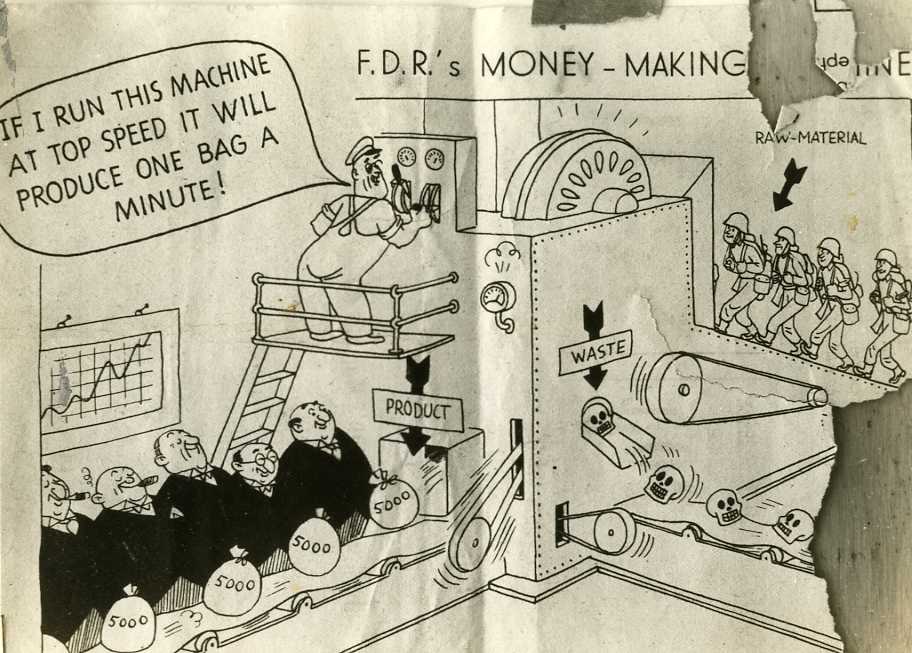
“FDR’s Money Making Machine,” Gift in Memory of William F. Caddell, Sr., 2007.048.073
On January 30, 1942, Adolf Hitler spoke to a congregation of Nazi party members and soldiers in Berlin. He made no mention of the recent air raids, nor did he speak about the Nazi war effort. Instead, he used the opportunity to lambast Allied leaders Prime Minister Churchill and President Roosevelt in front of a captivated audience of devoted Nazi followers.
“This arch-liar today shows that Britain never was in a position to wage war alone. This gabbler, this drunkard Churchill. And then his accomplice in the White House, this mad fool.”
(more…)



The “Final Solution” to the Jewish question was decided in the Berlin suburb of Wannsee, in a stately and picturesque building alongside a garden and lake, on January 20, 1942. It is against this incongruous backdrop that history’s most infamous crime, the mass murder of an entire people, was decided upon in bland and bureaucratic proceedings and language. Indeed, the architect of this extermination, Adolf Hitler, was not even present at the meeting, and did not affix his signature of approval to the Wannsee Protocol, the document which is the closest written master plan we possess for the Holocaust.
The central mystery to all queries concerning Adolf Hitler and the Holocaust is, where did the hatred come from? And how could this man gain power in the most advanced nation in Europe, and proceed to implement this monstrous slaughter? Many profiles and much ink has been spilled in the effort to explain and understand how the Final Solution came to pass. Many explanations focus upon Hitler’s inner world and some hidden aberration, such as misplaced anger and blame at his Jewish doctor for failing to cure his mother’s cancer, vague speculations that Hitler’s grandmother had conceived out of wedlock by a married wealthy Jewish employer, claims that Hitler’s rage stemmed from repressed homosexuality, or even that his youthful anger with the Catholic church mutated into an intense hatred of the Jews as persecutors.
Those who seek rational explanation of the Holocaust and Adolf Hitler as historical phenomena cannot find satisfactory answers by the usual means of rational inquiry. But the proper place to seek a rational understanding of this most irrational and horrific event is inside of Adolf Hitler: not in his emotions, but in his mind and the ideas he believed in. Hitler believed in and acted upon a worldview which, however unsound in factual reality, had a horrible logic. It is a testament to the essential inhumanity of himself and his followers that they believed they were acting from motives of beautifying the world.
(more…)



This unique collection was donated to the Museum by the family of Lawrence “Larry” Hirshbach. While we do not have much information on his service, we do know he was in Berlin in July 1945. He writes home (on the stationery of the Fuhrer) that “There is no more use in anyone’s going to the Reichschancellery any more – I spent three hours there last night rummaging and nothing of value remains.”
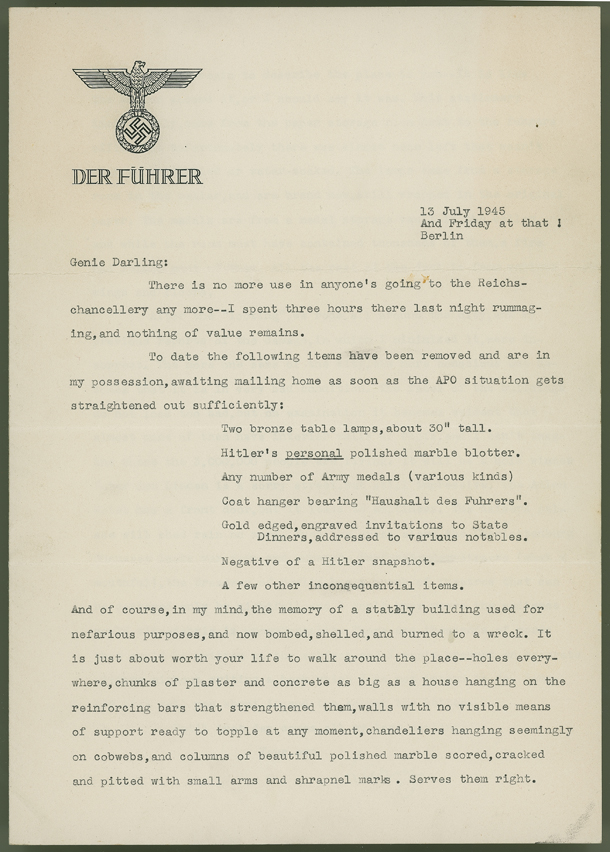
(more…)



December 7, 1941, is a date which retains its unique power in the national consciousness of the American people because it marks our entryway into the Second World War and ultimately the pathway to the dominant position of the United States in world affairs, the Pax Americana of the twentieth century. The Japanese attack decisively ended American neutrality and our efforts to isolate the nation from the previous decade of troublesome world affairs. To many, it is the day the United States shed its innocence and naiveté, and shouldered the burdens of world leadership.
For most Americans, however, the Japanese attack was a surprising gateway to this destiny. Events in remote Asia were not seen as an immediate threat to the United States at the end of 1941. Instead, it seemed more likely that the United States would be drawn into war with Nazi Germany, as the American convoys carrying Lend-Lease to Great Britain came under fire from the German navy. Instead, war came to Americans in an unanticipated, blinding flash from across the Pacific, an attack that succeeded beyond the imagination of its planners in many respects, an attack that caught the American military unawares and in an embarrassed state and exposed condition. The story of the missed signs, misinterpretations, misunderstandings and many ironic passages which all combined to lead to Pearl Harbor is a vast tapestry.
(more…)



“Before three months have passed, we shall witness a collapse in Russia, the like of which has never been seen in history.”—Adolf Hitler, 2:30am, June 22, 1941
October 1941 was an especially grim time for the Soviet Union as it appeared that Adolf Hitler might win his historical gamble to crash in the Soviet Union and end the eastern war with a military victory before the United States was drawn into the conflict. A solitary Great Britain would then be forced to come to terms with Germany’s impregnable continental triumph. Hitler would then be free to pursue his dream of a greater Aryan empire in eastern Europe, an empire economically supported through enslaving the Slavic peoples while cleansing the lands of all racial undesirables. Hitler was betting that a Blitzkreig strike against the Soviet Union could attain a military defeat within six months, paving the way to his Aryan utopia.
The German army which launched Operation Barbarossa at 3:30am on June 22, 1941, along a long front stretching from the Baltic to the Ukraine totaled over 3.1 million men. In its mechanical force it had nineteen panzer divisions and twelve motorized divisions, 3,350 tanks, 5,000 aircraft, and 7,000 pieces of artillery. General von Bock’s Army Group Center, located in the center of the line, had two objectives: first to capture Minsk, and then make the decisive strike to the heart by driving to Moscow. Army Group North would capture the Baltic and Leningrad; Army Group South would drive to Kiev and the southern oil fields. Hitler’s Blitzkreig strategy again relied upon speed, and the initial thrust did not disappoint. His Panzer divisions knifed ahead fifty miles a day once the attack was launched; German forces were overrunning and encircling Soviet troops. Because the Soviet troops had been warned, their superior numbers did not translate into resistance, but rather greater numbers of captured prisoners. The Luftwaffe was initially very effective in cutting rail and road support for the Soviet armies, and over 5,000 Soviet planes were destroyed on the ground by August, almost fifty percent of the Soviet front-line defensive air strength.
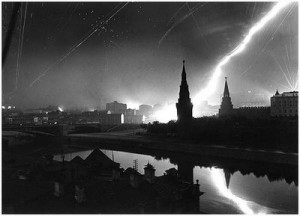
German Raid on Moscow, 1941
(more…)



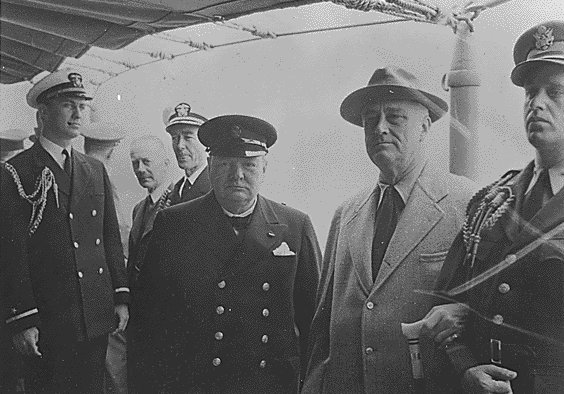
With the 70th anniversary of Pearl Harbor on the horizon, we turn our attention to the eve of US involvement in the war that changed the world. This entry by the Museum’s Senior Director of History & Research, Keith Huxen, is just one of many historical essays on 70th anniversaries we will be posting in coming years. You can also keep up with significant dates by following the Museum’s Twitter feed, @wwiitoday.
The Atlantic Charter: 70th Anniversary, August 14, 1941
In the summer of 1941 the historical pathway of the Second World War was rapidly changing. In Asia, Japan found herself still struggling after four years to complete and consolidate her conquests in China without recourse or access to the raw materials spread further across the Southeast Asian archipelago. Pressure in the European war was also reaching critical mass. Great Britain, having survived the previous summer by fending off Operation Sea Lion, Hitler’s planned invasion across the English Channel, had continued to fight Germany alone. Unable to complete Britain’s defeat by late October 1940, Hitler gambled and unleashed Operation Barbarossa, the German invasion and double-cross of the Soviet Union. The Germans believed that total victory over the USSR could be completed in six months. Germany’s gamble would achieve four great objectives: Soviet defeat would rob Britain of her last potential European ally and force Britain to a separate peace; Hitler would eliminate the Soviet Communist regime which he regarded as his great ideological enemy; Hitler would acquire through invasion the vast Lebensraum or eastern living space in Ukraine where he intended to build a purely Aryan empire; and last, as the German army acquired and controlled the territories of Eastern Europe, Hitler would gain control of two-thirds of Europe’s Jewish population (along with other racial undesirables in the Nazi lexicon) which he intended to extinguish from European life. Unleashed on June 22, 1941, the Nazi invasion and strategy appeared to have a good chance of success as the Nazis drove deep into Soviet territories.
Despite a long and dedicated political opposition to Communism, Britain’s Prime Minister Winston Churchill immediately welcomed Joseph Stalin and the Soviets as an ally in the fight against Nazism. When questioned on his political pivot, Churchill famously observed that “if Hitler invaded Hell, I would at least make a favorable reference to the Devil.”
(more…)



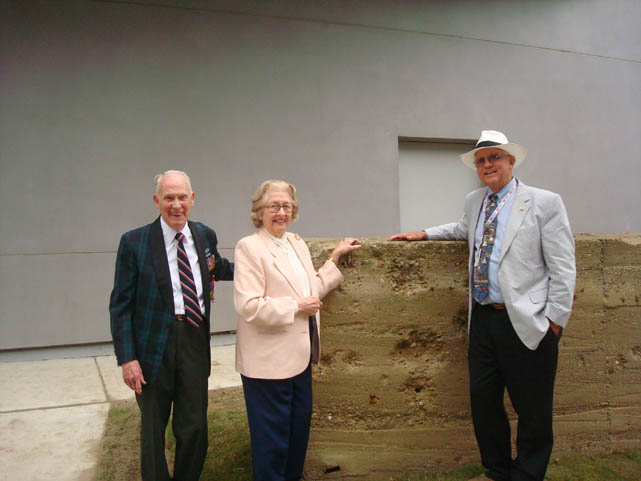
The story of the Atlantic Wall’s arrival in New Orleans came full circle this week when we were contacted by WWII vet, R. Randolph “Randy” Richmond Jr. He had read about the wall segments that arrived at the Museum on July 23, a gift from the Utah Beach Museum, and generously offered to pay for all of the shipping costs. He visited the Museum this week to write an initial check and see the pieces for the first time in 67 years. Richmond had first seen the fortifications when he came ashore at Utah Beach a month after D-Day. In an interview with the New Orleans newspaper the Times-Picayune, he said they “brought back memories.” He added “I thought they were higher.”
Read the Times-Picayune story.
Read the press release on the Atlantic Wall arrival.
Posted by interactive content and community manager Kacey Hill




This week the Museum received a very unusual gift from the Utah Beach Museum – three large pieces of concrete totaling nearly 22 tons. During WWII, they made up a part of the of the German defenses known as the Atlantic Wall.
Completed in 1944, the Atlantic Wall was a series of fortifications Hitler ordered built to guard Europe’s west coast from Allied assault. Made up of mines, pillboxes, tank traps and the infamous “Rommel’s asparagus,” the Atlantic Wall stretched more than 3,200 miles, presenting a formidable obstacle for the Allied troops charged with executing the D-Day invasion.
These particular pieces were donated to the Museum to make way for a significant expansion of the Utah Beach Museum. Currently, you can see two of the three wall segments on the grounds of the Museum outside the Solomon Victory Theater.
See more photos of the journey from Utah Beach to New Orleans.
Read the press release.
Posted by interactive content and community manager Kacey Hill










